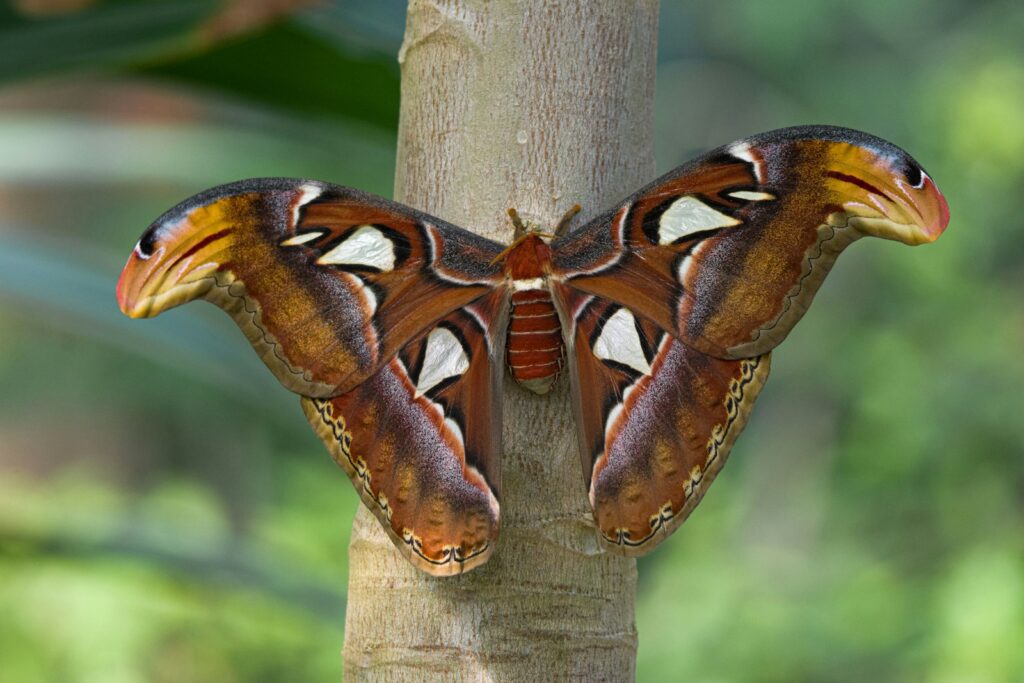The world of exotic pet keeping continues to evolve beyond traditional companion animals like dogs and cats. In recent years, the exotic insect trade has flourished, offering enthusiasts the opportunity to observe and care for some of nature’s most fascinating arthropods. From vibrant beetles with iridescent exoskeletons to massive stick insects that stretch the imagination, these invertebrates represent a unique intersection of educational value and exotic pet appeal. The growing popularity of insect keeping has created specialized communities of collectors and breeders dedicated to these often misunderstood creatures. For newcomers and experienced keepers alike, the exotic insect market presents an intriguing avenue to explore the diversity of the invertebrate world from the comfort of home.
The Giant Prickly Stick Insect: Nature’s Masters of Disguise
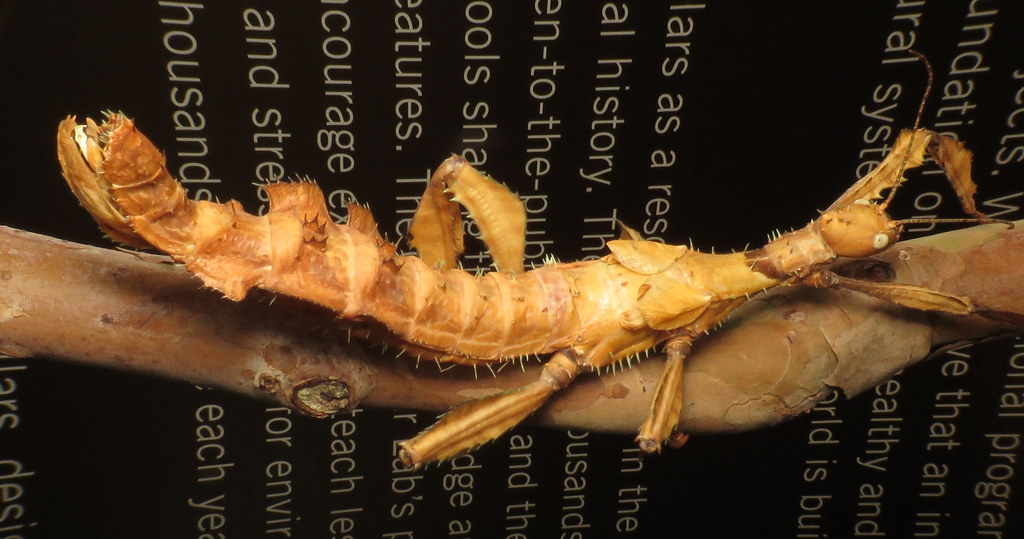
The Giant Prickly Stick Insect (Extatosoma tiaratum) stands as one of the most impressive camouflage specialists in the invertebrate world. Native to Australia, these remarkable creatures can reach lengths of up to 8 inches and possess leaf-like appendages that make them nearly invisible in their natural habitat. Female specimens are particularly sought after in the pet trade due to their larger size and more elaborate appearance compared to their male counterparts. What makes them especially appealing to keepers is their docile nature and relatively straightforward care requirements – a diet primarily consisting of eucalyptus, bramble, or rose leaves, combined with regular misting to maintain humidity. Their fascinating life cycle, from tiny ant-mimicking hatchlings to impressive adults, provides keepers with a continuously evolving display of evolutionary adaptation.
Goliath Beetles: Living Jewels of Enormous Proportions
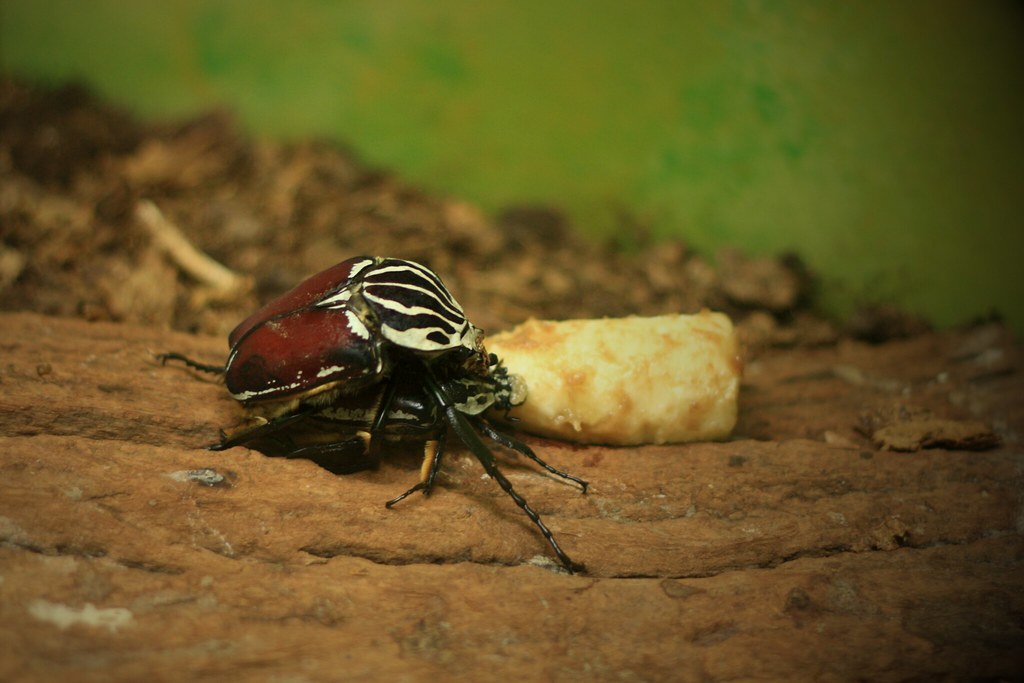
Goliath Beetles (Goliathus species) represent some of the heaviest insects in the world and are prized possessions for serious exotic insect collectors. These magnificent African beetles can reach weights of up to 100 grams and lengths exceeding 4 inches, making them truly impressive specimens. Their striking appearance features dramatic patterns in black, white, and sometimes yellow, with males displaying distinctive Y-shaped horns on their heads used in competitive displays. The breeding of Goliath Beetles has become increasingly successful in captivity, though their care remains moderately challenging, requiring specific humidity levels and a protein-rich diet during their larval stage. Adult beetles generally feed on fruit and tree sap, with specialized commercial jelly products now available specifically for beetle enthusiasts wishing to maintain these impressive insects.
Madagascar Hissing Cockroaches: The Gateway Exotic
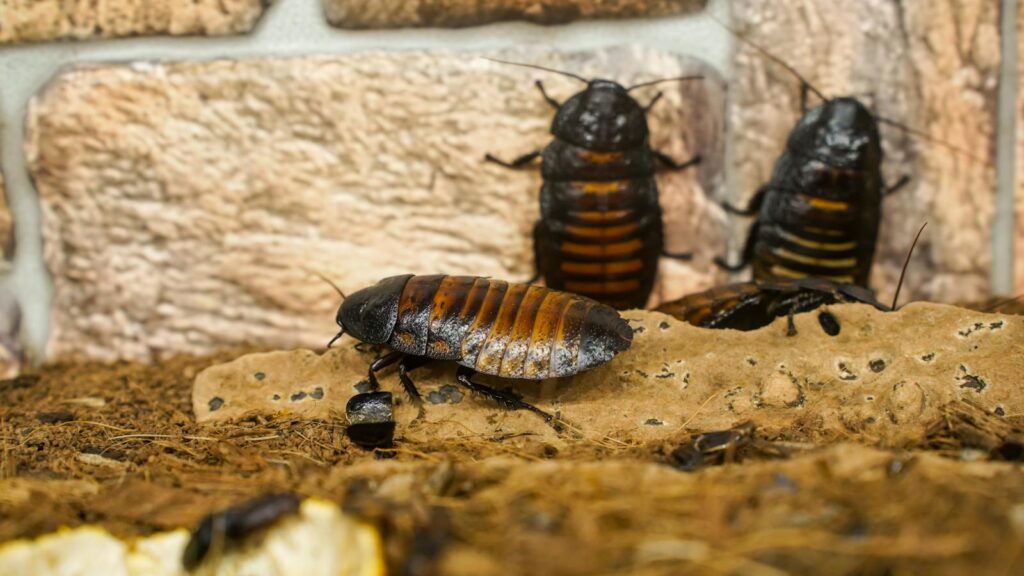
The Madagascar Hissing Cockroach (Gromphadorhina portentosa) has become perhaps the most accessible entry point into exotic insect keeping for beginners. These impressive insects can grow to around 3 inches in length and are named for their distinctive hissing sound produced by forcing air through specialized breathing tubes called spiracles. Unlike pest cockroach species, these insects are clean, odorless, and entirely suited to captivity, requiring only simple housing with hiding places, moderate humidity, and a diet of fresh fruits and vegetables supplemented with commercial cockroach food. Their long lifespan of 2-5 years and fascinating social behaviors, including hierarchical structures among males, make them particularly engaging pets for observation. The breeding of hissers is straightforward in captivity, allowing keepers to observe their complete life cycle from nymphs to adults.
Orchid Mantis: Living Artwork of the Insect World

The Orchid Mantis (Hymenopus coronatus) stands as perhaps the most visually stunning mantid species in the exotic pet trade, commanding premium prices for its extraordinary appearance. These Southeast Asian predators have evolved to mimic orchid flowers with remarkable precision, featuring petal-like leg extensions and coloration ranging from white to pink that serves to both attract pollinating insects and avoid detection by predators. Keeping these specialized mantids requires more careful attention than some other exotic insects, with particular focus on maintaining proper humidity levels and providing appropriately sized live prey items. Their hunting behavior is especially captivating to observe, as they employ a patient sit-and-wait strategy, remaining motionless until unsuspecting prey ventures within striking distance. Despite their delicate appearance, properly cared for Orchid Mantids are surprisingly hardy in captivity, living approximately 8 months as adults while providing an unparalleled display of natural mimicry.
Atlas Moths: Giants of the Lepidoptera Order
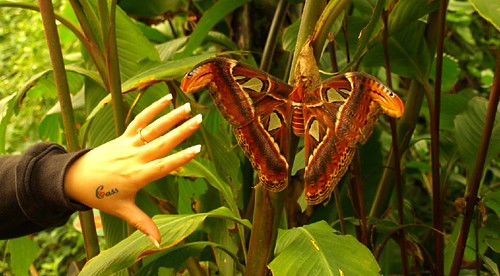
The Atlas Moth (Attacus atlas) holds the distinction of being among the largest moths in the world, with wingspans that can exceed 12 inches, making them truly spectacular additions to any exotic insect collection. Native to the forests of Southeast Asia, these moths feature distinctive wing patterns with prominent “snake head” markings at their wing tips, thought to deter potential predators. The life cycle of Atlas Moths in captivity presents both challenges and rewards for keepers, as the caterpillars require specific host plants like cinnamon or citrus trees, and maintaining proper humidity levels throughout metamorphosis demands careful attention. Perhaps the most poignant aspect of keeping these magnificent insects is their ephemeral adult phase—adults emerge without functional mouthparts and live only 1-2 weeks, focused entirely on reproduction rather than feeding. This brief but magnificent adult stage creates a bittersweet experience for keepers, who must appreciate the fleeting beauty of these giant moths.
Rhinoceros Beetles: Herculean Strength in Miniature

Rhinoceros Beetles (Dynastinae subfamily) have captivated exotic insect enthusiasts with their impressive horns and remarkable strength—capable of lifting objects up to 850 times their own body weight. The Japanese Rhinoceros Beetle (Allomyrina dichotoma) in particular has achieved legendary status in Asian countries, where beetle-keeping traditions span generations and competitive beetle wrestling remains a cultural phenomenon. Housing requirements for these powerful insects are relatively straightforward, consisting of a terrarium with a substrate of rotting wood or specialized beetle substrate, along with pieces of bark for climbing and hiding. The larvae develop underground for months or even years depending on the species, feeding on decaying plant matter and growing to impressive sizes before pupating and emerging as adults. While most species have relatively short adult lifespans of 3-6 months, their impressive appearance and behaviors during this period make them particularly rewarding exotic pets.
Blue Death-Feigning Beetles: Desert Jewels
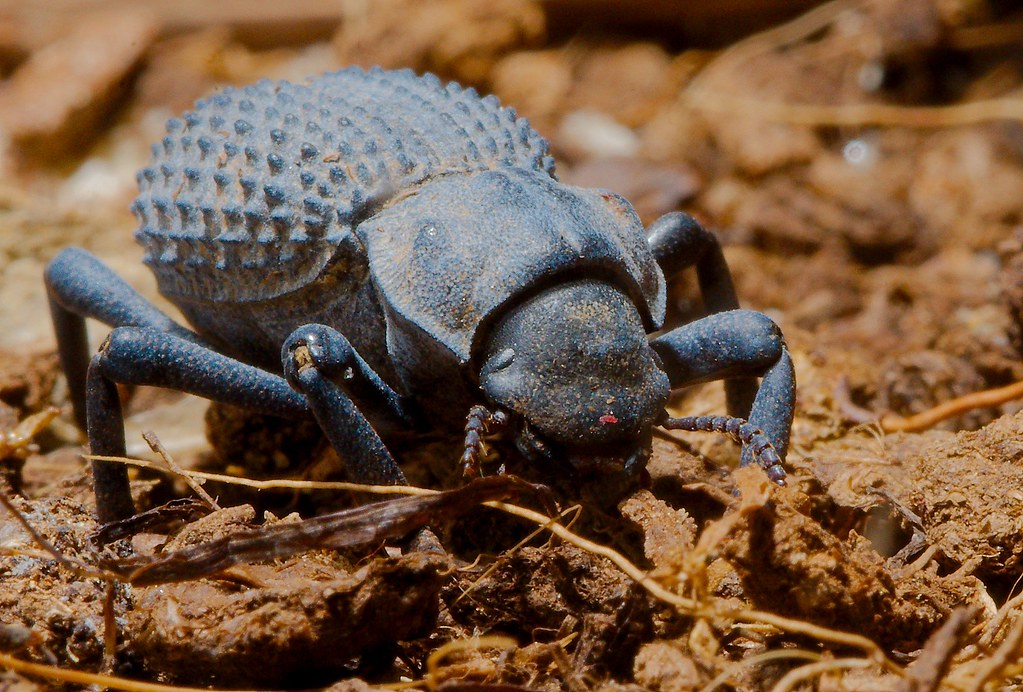
The Blue Death-Feigning Beetle (Asbolus verrucosus) has emerged as one of the most popular exotic insects for beginners due to its striking appearance and minimal care requirements. These native North American desert dwellers display a distinctive powdery blue exoskeleton created by a waxy secretion that helps prevent water loss in their arid natural habitats. True to their name, these beetles exhibit the fascinating defensive behavior of playing dead when threatened, remaining motionless for extended periods until the perceived danger has passed. Their hardiness in captivity is remarkable, with individuals living 2-3 years on a simple diet of fresh vegetables, fruits, and commercial insect food. Colonies of these beetles can be maintained in relatively small enclosures with a sand substrate, making them ideal for keepers with limited space who still wish to experience exotic insect keeping.
Thai Zebra Tarantulas: Striking Arachnid Beauties
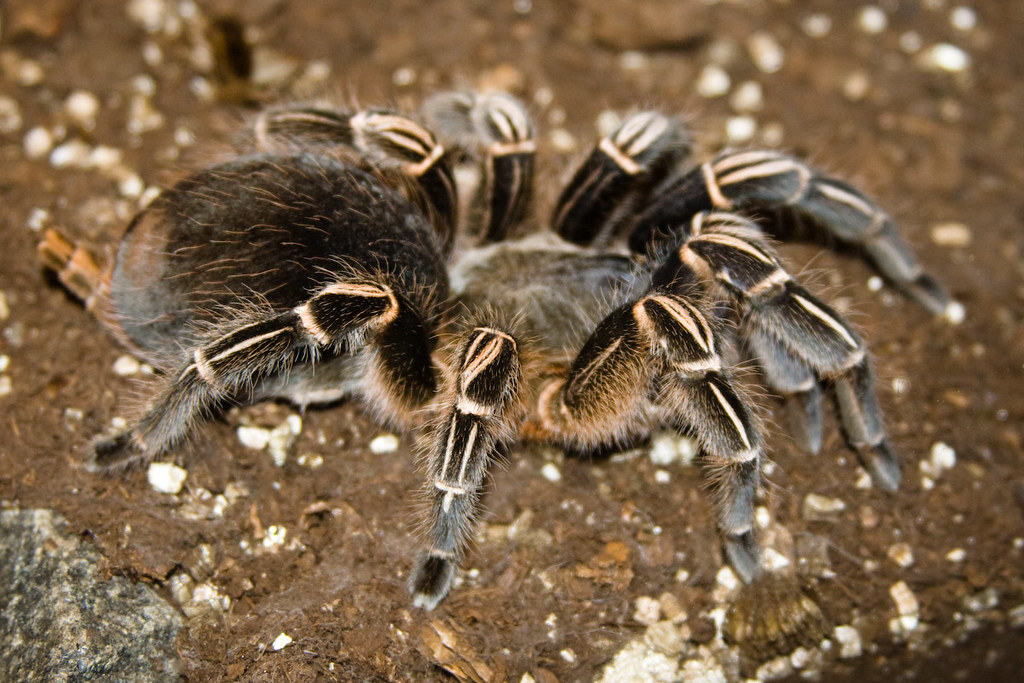
While technically arachnids rather than insects, the Thai Zebra Tarantula (Cyriopagopus albostriatus) deserves mention as one of the most visually striking invertebrates in the exotic pet trade. These Old World tarantulas display a dramatic black exoskeleton with bright white stripes, creating a high-contrast pattern that captivates collectors. As arboreal species, Thai Zebras require taller enclosures than many other tarantulas, with plenty of climbing opportunities and hiding spots to accommodate their natural behaviors. Keepers should note that these tarantulas possess potent venom and can be defensive, occasionally exhibiting threat displays with raised front legs when disturbed, making them more suitable for experienced invertebrate enthusiasts. Their care regimen includes maintaining higher humidity levels than desert species and feeding a diet of appropriately sized crickets, roaches, or other insects every 7-10 days for adults, with juveniles requiring more frequent feedings.
Jungle Nymphs: Prehistoric-Looking Leaf Mimics

The Jungle Nymph (Heteropteryx dilatata) presents one of the most dramatic sexual dimorphisms in the insect world, with females growing into massive, bright green leaf mimics while males remain small, slender, and capable of flight. Female specimens can reach lengths of nearly 6 inches and weights that make them among the heaviest stick insects in the world, with broad leaf-shaped bodies and spiny legs that contribute to their prehistoric appearance. These Malaysian natives require spacious enclosures with sturdy branches for climbing and a variety of potential food plants including bramble, oak, raspberry leaves, and eucalyptus. One fascinating aspect of keeping Jungle Nymphs is their defensive display—when threatened, they will raise their spiny legs, spread their vestigial wings to reveal bright colors, and even produce a hissing sound while striking with their legs. Despite this intimidating display, they remain harmless to humans and become quite docile with regular handling.
Giant Water Bugs: Aquatic Predators of Surprising Size

Giant Water Bugs (Belostomatidae family) represent some of the largest true bugs in the world and have gained popularity among keepers interested in aquatic invertebrates. These formidable predators, sometimes called “toe-biters” due to their powerful rostrum capable of delivering a painful bite, can exceed 4 inches in length and are equipped with specialized front legs designed for grasping prey. Maintaining these aquatic hunters requires a dedicated aquarium setup with both underwater areas and dry perches, as they must surface periodically to breathe atmospheric air. Their predatory nature makes them fascinating to observe during feeding, as they can subdue prey items significantly larger than themselves, including small fish, amphibians, and other aquatic invertebrates. Perhaps most fascinating is the reproductive behavior of certain species like Lethocerus, where females lay eggs on the backs of males, who then carry and care for the developing eggs until they hatch—a rare example of paternal care in the insect world.
Emperor Scorpions: Impressive Yet Docile Giants

The Emperor Scorpion (Pandinus imperator), while technically an arachnid rather than an insect, remains one of the most impressive invertebrates in the exotic pet trade. These massive scorpions can reach lengths of 8 inches, with glossy black exoskeletons and impressively large pincers that give them an intimidating appearance despite their relatively mild venom and docile nature. Native to West African forests, Emperor Scorpions require enclosures with deep substrate for burrowing, moderate humidity, and plenty of hiding places to mimic their natural habitat. Their longevity is particularly appealing to keepers, with individuals living 5-8 years in captivity when properly maintained. Despite their fearsome appearance, Emperor Scorpions rarely use their stingers, preferring instead to grasp potential threats with their powerful pedipalps, making them appropriate for careful handling by experienced keepers.
Ethical Considerations in the Exotic Insect Trade

The exotic insect trade raises important ethical considerations that responsible keepers must acknowledge. Wild collection practices can potentially damage native populations and ecosystems, particularly for rare or endemic species with limited distributions. Conscientious keepers increasingly seek captive-bred specimens, which not only reduces pressure on wild populations but typically results in specimens better adapted to life in captivity. The transportation of exotic insects across international borders requires strict adherence to regulations designed to prevent potential ecological disasters through accidental introductions of non-native species. Organizations like the International Union for Conservation of Nature monitor the status of invertebrate species, and potential keepers should research thoroughly to ensure their desired species isn’t threatened in its native range. The most ethical approach to exotic insect keeping involves supporting sustainable breeding programs, learning proper husbandry techniques before acquisition, and never releasing captive specimens into non-native environments.
Setting Up for Success: Essential Equipment for Exotic Insect Keeping
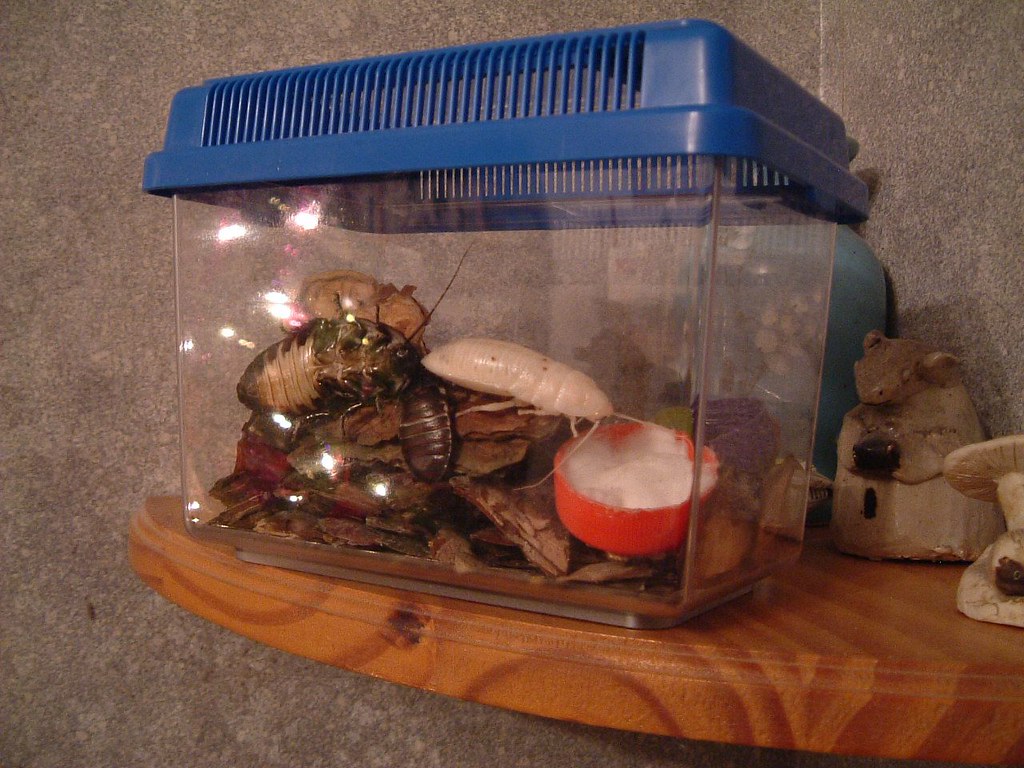
Successful exotic insect keeping begins with creating appropriate habitats that replicate the essential elements of a species’ natural environment. For most species, this starts with selecting the right enclosure—ranging from simple plastic containers with ventilation for many beetles to sophisticated glass terrariums with specialized lighting for more demanding species like mantids. Substrate selection varies dramatically based on species requirements, from coconut fiber for tropical species to specialized beetle substrate for rhinoceros beetle larvae. Temperature and humidity control represent critical factors in insect health, often requiring investment in tools like thermometers, hygrometers, heat mats, and misting systems for more sensitive species. Additionally, proper research into dietary requirements is essential, as many exotic insects have specialized feeding needs that can include fresh plant material, specialized commercial foods, or appropriately sized live prey items. When properly equipped, even beginners can successfully maintain many exotic insect species, creating rewarding opportunities to observe some of nature’s most fascinating invertebrate adaptations.
Conclusion: The Future of Exotic Insect Keeping

The exotic insect trade stands at a fascinating crossroads, balancing growing popularity with increasing awareness of conservation concerns and ethical considerations. As more enthusiasts discover the unique rewards of keeping these invertebrates, advances in breeding techniques continue to reduce reliance on wild-caught specimens while expanding the diversity of species available to responsible keepers. Educational opportunities abound in this hobby, offering intimate glimpses into evolutionary adaptations, behaviors, and life cycles that might otherwise remain inaccessible to the average person. For those willing to research thoroughly and provide appropriate care, exotic insects offer a remarkable window into the invertebrate world—one that fosters appreciation for the smaller creatures that comprise the vast majority of animal diversity on our planet. As the hobby continues to mature, the focus on sustainable practices, proper husbandry, and conservation awareness promises to ensure that future generations can continue to marvel at these extraordinary invertebrates both in the wild and in carefully maintained collections.

